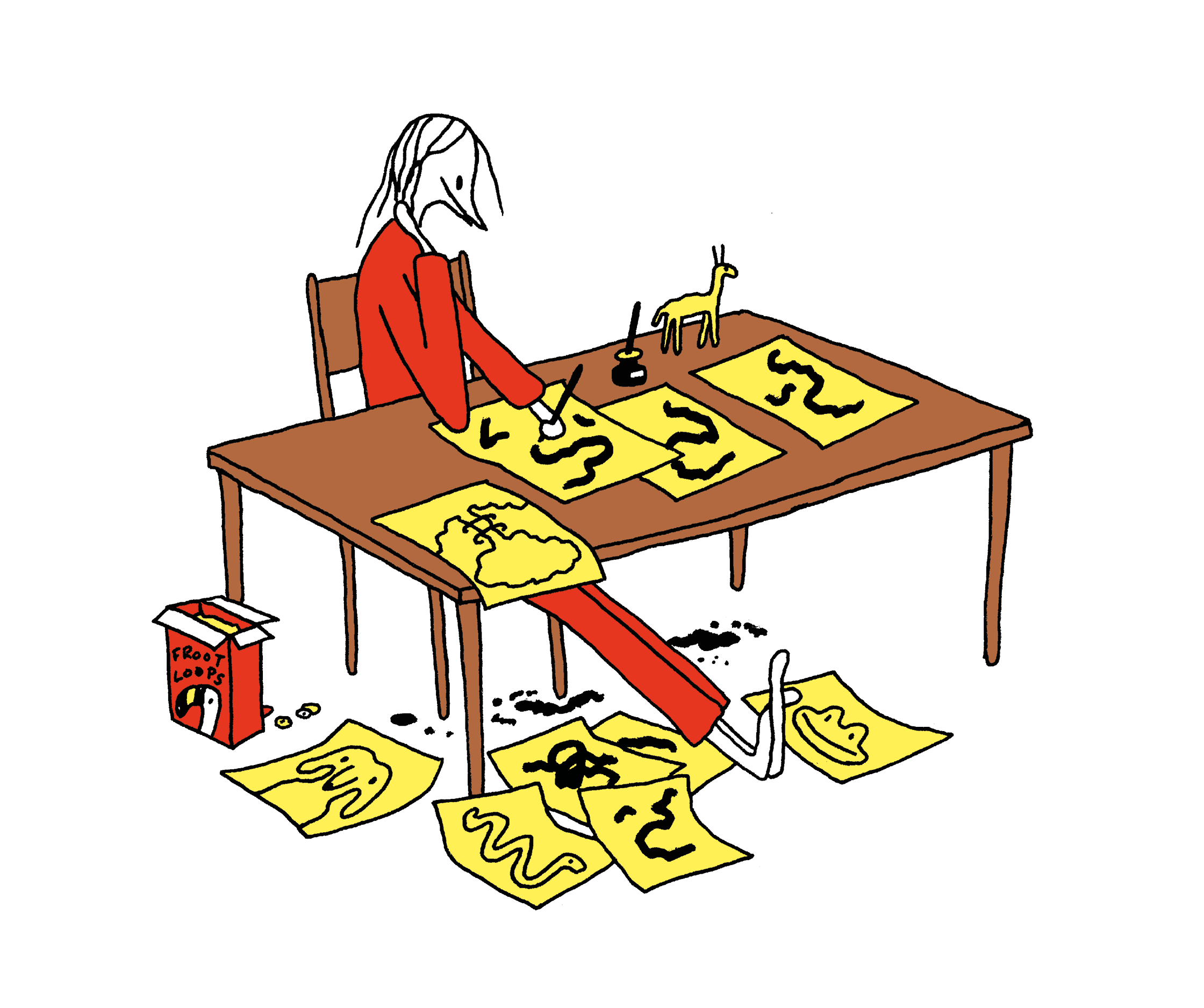“The deep geological repository is a typically Swiss project”
Anna Haifisch is a star in the independent comics scene – her works combine abstraction and humour with a dark undertone, a questioning line with bold colours. She created all the illustrations for this year’s edition of “500m+”. We spoke to the 39-year-old Leipzig-based artist about how she approached this task.

Interview: Michèle Roten
When you were asked to create illustrations on the subject of a deep geological repository, what was your first reaction?
I thought, “That sounds interesting!” I enjoy illustrating the dark and evil. Not that the repository is evil per se, but there is something sinister surrounding the topic of radioactive waste. That intrigued me.
Were you already familiar with the topic?
Not really. Here in Germany in the 1990s, radioactive waste was transported across the country in Castor containers. Protests against this were quite intensively covered by the media at the time. But I don’t even know where Germany currently stands on the issue. To be honest, I wouldn’t even know if we’re dumping the waste into the sea or selling it to someone. It is a bit irresponsible to ignore the topic.
In my experience, hardly anyone gives radioactive waste much thought
Well, we are unaware of the waste volume involved. And what is in these Castor containers, little kernels, or maybe a rod?
Have you done any research?
Yes, I read Swiss newspaper articles because I thought that the issue might be associated with protests and outcry. Interestingly enough, this is not the case. Overall, this made total sense to me: rather than selling the waste to some shady merchant who will just dump it elsewhere, disposing of it properly is of course the neatest solution. It’s very typical of the Swiss: take care of a problem early and find a proper and lasting solution. (Laughs)
You designed seven different risk scenarios for this magazine. What approach did you take?
First, I had a look at what the repository is planned to look like one day – just to get a rough idea. Then I thought: whew, maybe humour could help when illustrating technical components. I wanted to draw major catastrophes like meteorites, floods and earthquakes, but also capture minor mishaps.
Your pictures mainly feature animals. Squirrels search for nuts, cows carry away the soil, rays swim around, martens bite through cables. Why?
I like drawing animals, I simply enjoy it. It also spares me some decision-making, for example on gender or other details. Animals are a little more abstract.
Do you see some scenarios as more or less likely – or do you find it difficult to assess each risk?
The greatest risks are usually banalities that could trigger a chain of unfavourable events. I think this can be assessed. I’m sure that a marten has already bitten through a cable in a server room. After all, they love cables. And the server doesn’t have to be 900 metres underground. It could be installed somewhere in Norway and an employee accidentally lets the animal into the office after the lunch break. With the squirrels, I found it funny to think about what would happen if not only humans constructed a repository, but also a scurry of squirrels. Would nuts and fuel rods eventually get in each other’s way?
What role does humour play when dealing with risks and fears?
I think it must be included, especially when dealing with difficult topics. But there is, of course, a fine line between being humorous and mocking, or trivialising, the issue.
How do you choose your colours?
I have a colour palette that I like to use: a lot of yellow, red and black, but also brown and a little purple. And heaps of orange. It’s a bit dystopian, apocalyptic. Matches the topic, right? (Laughs)
When it comes to repositories, we are dealing with enormous time frames, thinking one million years into the future. What do you think: what will the world look like one day?
Let’s put it this way: I don’t have a very high opinion of the human race, which is why I don’t expect us to be around by then. I think the only bipeds still on earth at that point will be birds. Which wouldn’t necessarily be such a bad thing.
So you think we humans will eliminate ourselves, or are already in the process of doing so?
Yes, I believe our pride, our stupidity and our greed will be our downfall. But as I said, that prospect doesn’t bother me too much. In fact, we don’t really have to care about it at all.
More information about Anna Haifisch at hai-life.com.
Back to Issue 004